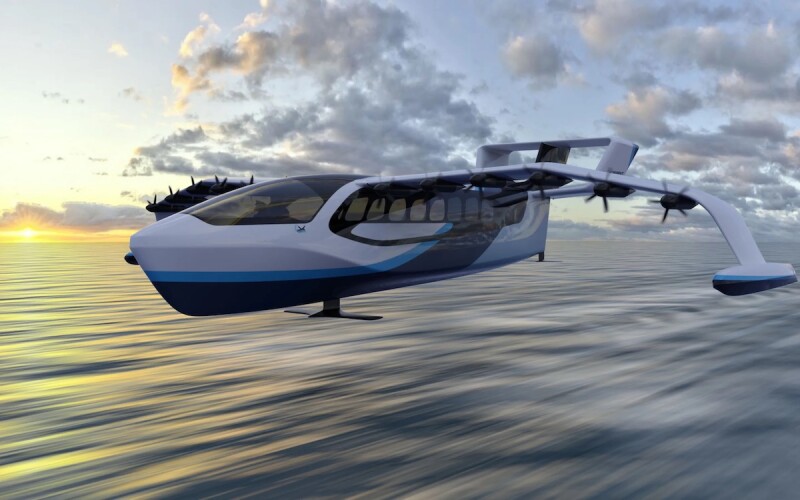The first all-electric harbor tug is at work in San Diego harbor. An old tug – refurbished to demonstrate a complete ammonia-powered propulsion system – sailed on a tributary of New York’s Hudson River in September.
Then there’s the electric flying boat, with a prototype under construction and potentially commercial delivery in 2026.
“Technology, innovation and adoption” are all converging and accelerating in maritime design, said Tom Huntley, vice president of government relations and defense for startup Regent Craft Inc., builders of the Viceroy seaglider.
Three innovative vessels were just an introduction to a “Vessels of the future” panel discussion Wednesday at the International WorkBoat Show. Driven by regulatory and market pressures to increase sustainability and “decarbonize” marine power systems, suppliers are working not just on novel vessels.
That focus has to include “the whole ecosystem,” said Matt Jackson, vice president of advanced energy with Crowley. “it’s not doing sustainability for the sake of sustainability.” Crowley delivered the eWolf, the first all-electric ship assist tug and a 2024 WorkBoat Significant Boat of the Year.
The advances are enabled by improving technology like increasing energy density in batteries, said Huntley. But just as importantly the industry needs “market-driven solutions” for its sustainability goals, he said.
The Viceroy flying vehicle design can offer that combination. At present, a regional airline flight from New York City to Boston can involve a taxi or ride share service to LaGuardia airport, followed by a flight to eastern Massachusetts, a chore of hours, said Huntley.
“And Logan (airport) isn’t even in Boston, so you’d have to Uber it again,” he quipped. With a local seaplane service, “imagine if you could do that tip door-to-door in an hour and a half.”
“What we are all trying to solve is decarbonization,” said Anastasija Kuprijanova, director of maritime business development for Amogy, an ammonia-to-power solutions company.
For marine power, Amogy’s answer is a “highly efficient reactor” to unlock ammonia – “the most dense material available” – to obtain hydrogen for fuel cells.
A steel tug originally built in 1957 was retrofitted with Amogy’s ammonia-to-electrical power system, and dubbed the NH3 Kraken – the chemical formula of ammonia, and a pun on the “cracking” technology used to extract the hydrogen component.
“Ammonia cracking is not that novel,” with long use in large-scale industrial processes,” said Kuprijanova. But it is novel in a mobility application, and that brings with it potential new regulatory issues, she noted.
“What we have now is a lot of ambitious (decarbonization) goals set by regulators,” so operators are pressured to seek solutions from technology companies, she said.
But new technology like batteries, ammonia and flying boats raise new issues with other authorities – like the Coast Guard.
“We started discussions with the Coast Guard two and a half years ago,” said Kuprijanova. It’s a critical process for both the industry and regulators.
“At the end of the day they need cooperation from us,” she said. “They’re building up a workforce of inspectors for the future."




